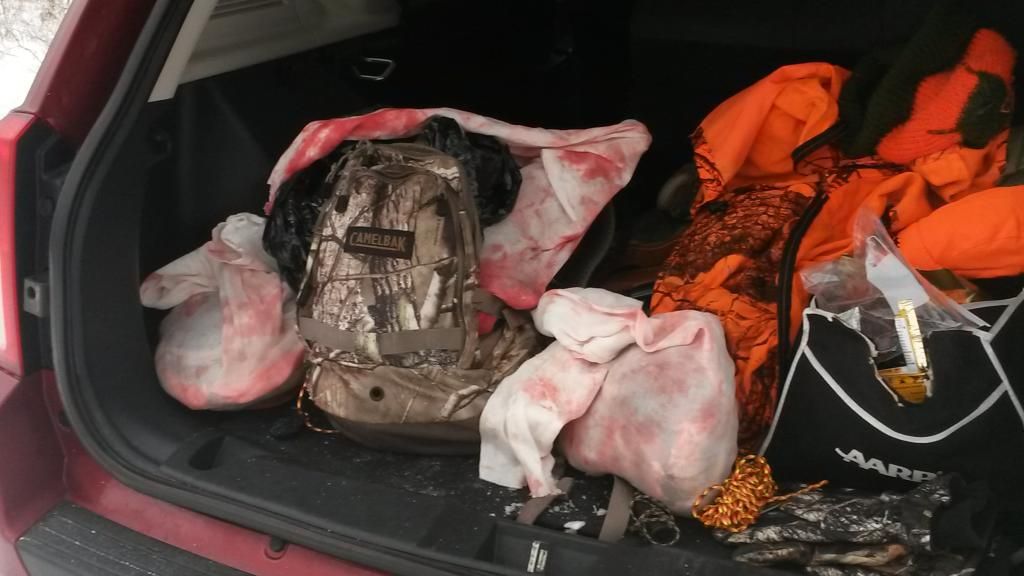I understand and appreciate your concerns, I really do. Like I stated above I don't recommend anyone use my method.
Each of us has to do our own risk assessment and determine what risk can be mitigated and which ones we are WILLING to assume. Trust me when I say that I took nothing lightly when I came up with my systems and that I tried it many times from ground level and I practice from it a lot. And the bridge/components I used are actually rated for climbing or tree stand use. The bridge is called a climbers sling (made out of dyneema) and it is rated above the rope bridge provided with the saddle and has far superior abrasion resistance. The stitching is also rated for climbing.
If I wanted to reduce all risk I would hunt on the ground or I would stay home and watch hunting shows on TV

I sure as heck would not climb up climbing sticks with pointed metal steps in the dark and on icy or rainy days. I would never hang a broad head tipped arrow close by a rope that I was hanging from that could cut my rope or could impel me if I did fall. I would also not hunt during gun season on public land and I would ALWAYS were florescent orange. All of these are risks accepted by hunters every day.
BTW leg straps do not assure anyone that they can't fall as stated above - there is nothing to prevent you from falling from the current design if you became inverted and most humans are top heavy. Heck a lot of the guys using saddles are using PLASTIC steps that they KNOW were recalled, home-made PVC Paws that were never rated for climbing and steel steps that could easily cause significant damage during a fall.......
All are risks that have to be thought out, mitigated and accepted or not.
Truth be known, I would love to find a minimalist saddle that had leg straps (just one strap with rated nylon/stitching) that was light weight ( 3pounds or under) and easily fits in a day pack. A saddle designed for hunting and one that did not have so many bells and whistles to where they now weigh close to what my lone wolf assault tree stand does …..…. Currently no one is manufacturing such a saddle so I have to "improvise".
Unnecessary risk? Perhaps. But then again, I am not sure it is safe and without risk to try to stick big game with an arrow launched form a longbow from 20 yards.......... but I am not ready to give up my longbow or chasing African game or big black bears to be "safe"......... not yet anyways.
DaveT1963
Posts: 48
Joined: Tue Dec 02, 2014 4:26 pm




